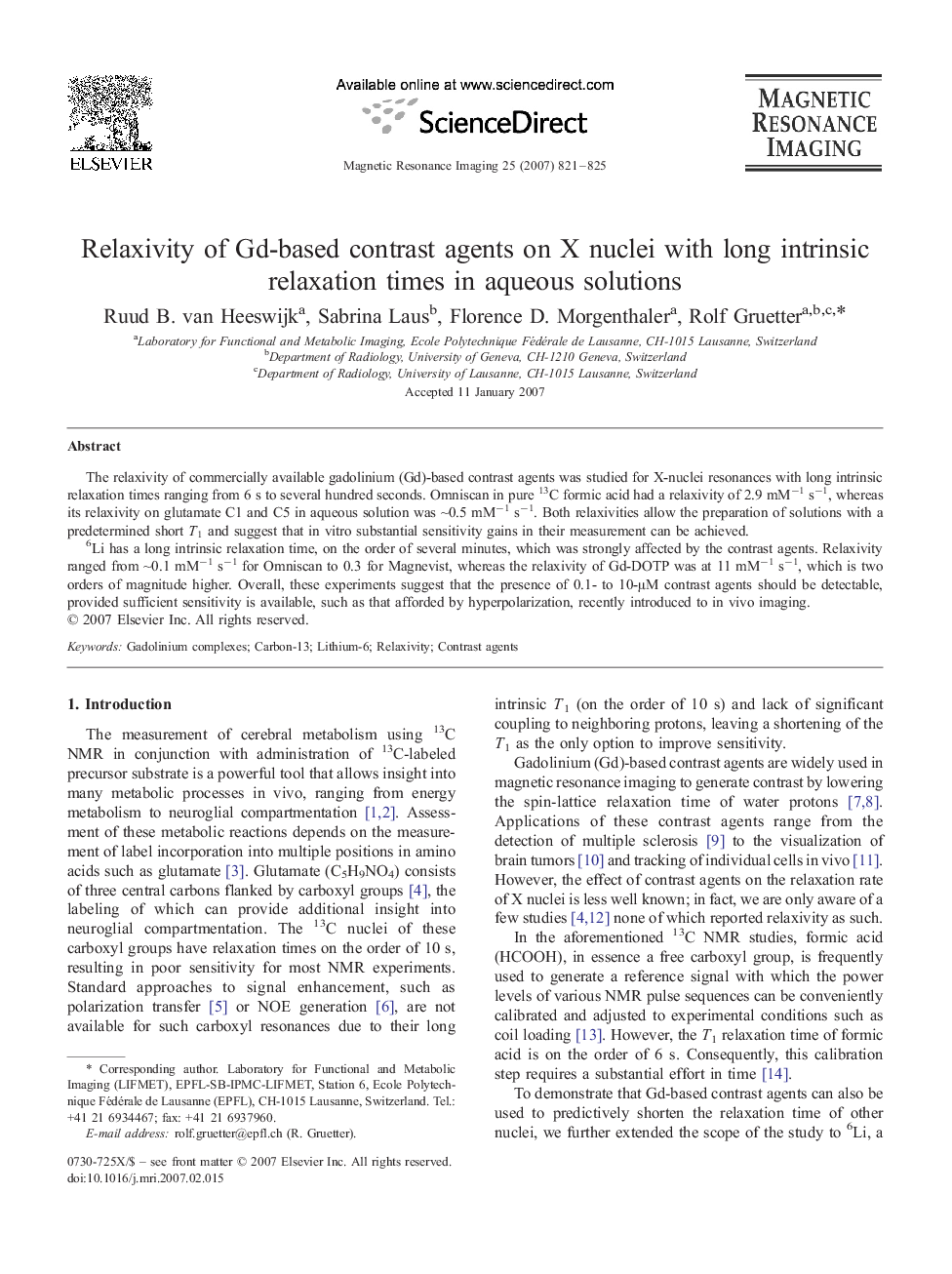| Article ID | Journal | Published Year | Pages | File Type |
|---|---|---|---|---|
| 1807522 | Magnetic Resonance Imaging | 2007 | 5 Pages |
The relaxivity of commercially available gadolinium (Gd)-based contrast agents was studied for X-nuclei resonances with long intrinsic relaxation times ranging from 6 s to several hundred seconds. Omniscan in pure 13C formic acid had a relaxivity of 2.9 mM−1 s−1, whereas its relaxivity on glutamate C1 and C5 in aqueous solution was ∼0.5 mM−1 s−1. Both relaxivities allow the preparation of solutions with a predetermined short T1 and suggest that in vitro substantial sensitivity gains in their measurement can be achieved.6Li has a long intrinsic relaxation time, on the order of several minutes, which was strongly affected by the contrast agents. Relaxivity ranged from ∼0.1 mM−1 s−1 for Omniscan to 0.3 for Magnevist, whereas the relaxivity of Gd-DOTP was at 11 mM−1 s−1, which is two orders of magnitude higher. Overall, these experiments suggest that the presence of 0.1- to 10-μM contrast agents should be detectable, provided sufficient sensitivity is available, such as that afforded by hyperpolarization, recently introduced to in vivo imaging.
